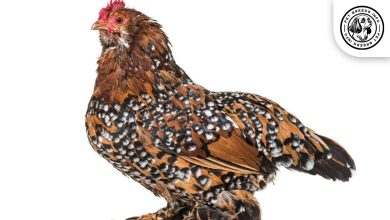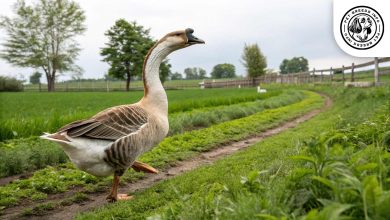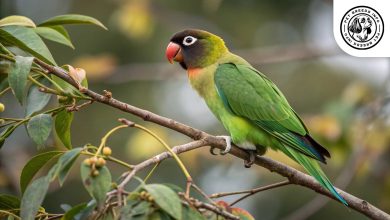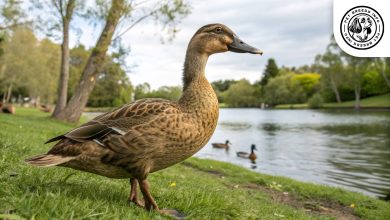Blue Swedish Duck Breed: Personality, Lifespan, Food & Care
General Introduction of the Breed
The Blue Swedish Duck, also known simply as the Swedish Duck, is a hardy and beautiful waterfowl breed originating from Sweden. This breed was first developed in the early 19th century, primarily bred for its meat, egg-laying capabilities, and attractive plumage. It remains a popular choice among farmers and duck enthusiasts for its hardiness and friendly nature.
Table of Contents
| Common Name | Blue Swedish Duck |
| Scientific Name | Anas platyrhynchos domesticus |
| Origin | Sweden |
| Size | Medium; Males: 8–9 lbs (3.6–4 kg), Females: 6.5–7.5 lbs (3–3.4 kg) |
| Lifespan | 8–12 years |
| Colors | Blue-gray with a white bib; dark gray legs and dark bill |
| Talking Ability | Low – makes gentle quacking sounds |
| Noise Level | Moderate – generally quiet, but alert when sensing danger |
| Social Behavior | Calm, friendly, and good with other animals and children |
Physical Characteristics
The Blue Swedish Duck is a medium-sized breed with a sturdy and well-proportioned body. Males weigh around 8–9 pounds (3.6–4 kg), while females typically weigh 6.5–7.5 pounds (3–3.4 kg). Their most recognizable feature is their blue-gray plumage, which is accented by a distinct white bib on the chest.
Their eyes are dark brown, giving them a gentle and intelligent expression. Their bills are typically a bluish-gray or greenish shade, complementing their overall coloration. The legs and webbed feet are a slate or dark gray color. The tail is medium-sized and slightly curved.

Personality and Temperament
Blue Swedish Ducks are known for their calm and friendly temperament. They are intelligent birds that adapt well to various environments, making them easy to handle even for novice duck keepers. They are moderately active and enjoy foraging, which makes them excellent for pest control in gardens and farms.
While they are social ducks and enjoy the company of other waterfowl, they are not overly demanding of human attention. They interact well with children and other farm animals, making them a great addition to family setups. Although not as vocal as some duck breeds, they will alert their owners to potential dangers in their surroundings.
Care and Maintenance Requirements
Blue Swedish Ducks are active birds that require space to roam and forage. A secure outdoor area with access to a pond or water source is ideal. They can adapt to smaller spaces if provided with sufficient exercise opportunities.
Their plumage is relatively low-maintenance, requiring no special grooming aside from occasional checks for cleanliness and feather condition. They are highly adaptable to different climates but need shelter from extreme cold and excessive heat.
Read More: Lemon Dove
Routine care includes regular nail trimming if they are not naturally wearing them down and occasional bill and foot inspections. Fresh water for drinking and bathing should always be available to maintain feather health.
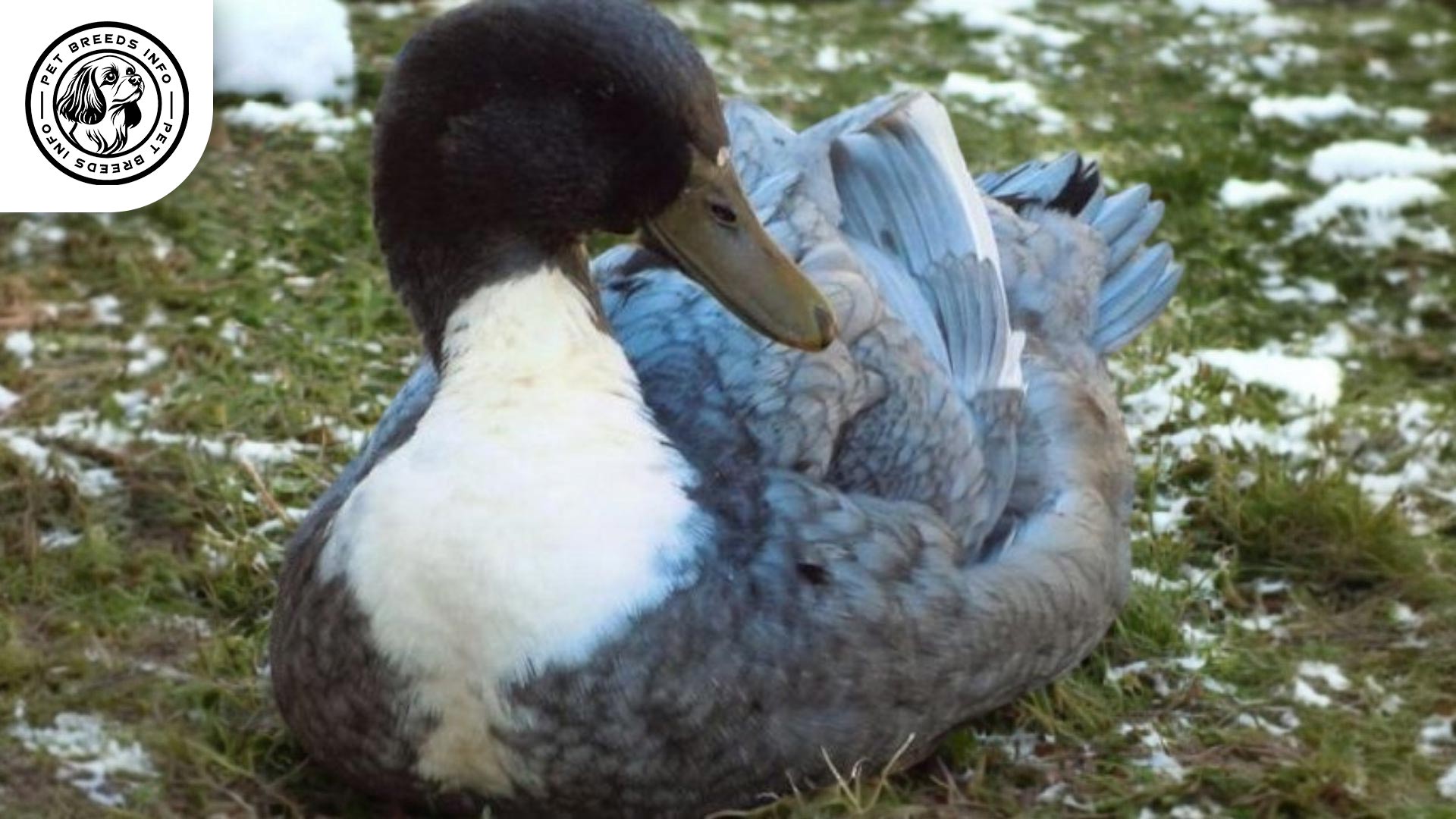
Diet and Nutrition
Blue Swedish Ducks thrive on a well-balanced diet consisting of high-quality duck pellets, grains, seeds, vegetables, and protein sources such as mealworms or insects. They also enjoy foraging for grass, weeds, and small invertebrates.
Foods to avoid include processed or salty foods, chocolate, avocados, and citrus fruits. Excessive bread consumption should also be avoided as it offers little nutritional value.
These ducks should be fed twice a day, with portion sizes depending on their age, activity level, and weather conditions. Fresh drinking water should always be accessible.
Health and Common Medical Issues
Blue Swedish Ducks are generally hardy but can be susceptible to common poultry ailments such as bumblefoot, respiratory infections, and parasites. Regular health checks and clean living conditions help prevent these issues.
With proper care, they have an average lifespan of 8–12 years. Regular veterinary care, vaccinations, and parasite control are recommended to maintain their well-being.
Read More: Sumatra Chicken
Training and Behavior Management
While ducks are not traditionally trained like dogs or cats, Blue Swedish Ducks can learn basic feeding routines and behaviors through consistent reinforcement. They tend to recognize their caregivers and may respond to calls or familiar sounds.
It is important to handle them gently from a young age to encourage tame and friendly behavior. Early socialization with humans and other animals helps build their confidence.
Interaction with Other Animals and Humans
Blue Swedish Ducks are friendly and adapt well to various environments. They do well in family settings and can be safely housed with other ducks and poultry species.
They interact well with children, especially when raised in human-friendly conditions. While they enjoy socializing with other ducks, they can be independent and do not require constant attention from their owners.

Price and Availability
The cost of a Blue Swedish Duck varies depending on location and breeder reputation. On average, ducklings cost between $5–$15, while adult ducks range from $20–$40.
When purchasing, it is important to buy from reputable breeders or hatcheries to ensure healthy and ethically-raised ducks. Some may also be available for adoption from animal shelters or rescue organizations.
Conclusion and Final Thoughts
The Blue Swedish Duck is an excellent choice for both beginners and experienced duck keepers. With its beautiful plumage, friendly temperament, and hardy nature, it is suitable for homesteads, farms, and backyard flocks.
Read More: Mandarin Duck
Ideal for those with space to allow foraging and water access, this breed thrives in well-maintained outdoor settings. If you are looking for a productive, attractive, and easy-to-care-for duck breed, the Blue Swedish Duck is a fantastic option.
FAQ
Where do Blue Swedish Ducks come from?
They originate from Sweden and were first developed in the early 19th century.
What are Blue Swedish Ducks used for?
They are valued for meat, egg-laying, and ornamental purposes due to their beautiful plumage.
Are Blue Swedish Ducks good for beginners?
Yes, they are calm, adaptable, and easy to manage, making them great for novice duck keepers.
Do Blue Swedish Ducks need a pond?
While not essential, access to a pond or water source is ideal for their health and enjoyment.
How much space do they need?
They need outdoor space to roam and forage, but they can adapt to smaller areas with proper care.

